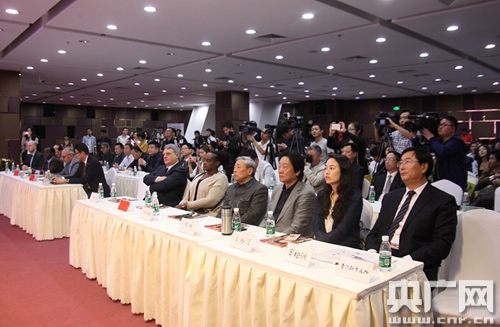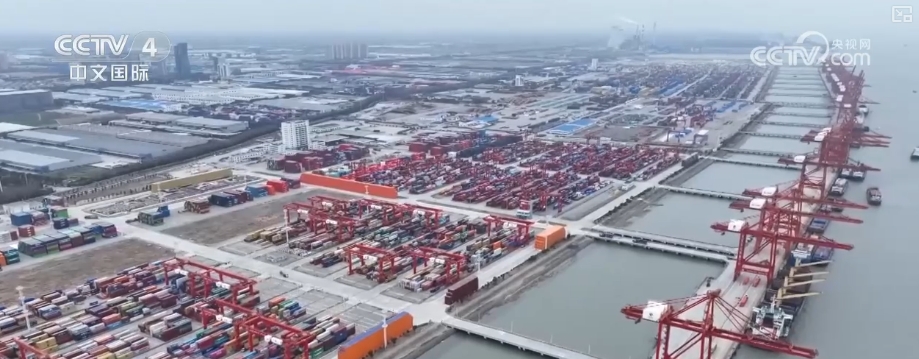How Far Can This Round Of Market Go?
How Far Can This Round Of Market Go?
This round of market started from the intraday low of 2689 points on September 18 last year to the intraday low of 3892 points on September 12 this year. It took a year to rise 1200 points, and the total market value of A exceeded 124 trillion yuan.
This round of market started from the intraday low of 2689 points on September 18 last year to the intraday low of 3892 points on September 12 this year. It took a year to rise 1200 points, and the total market value of A exceeded 124 trillion yuan. Undoubtedly, this is a bull market, so can this round of market break through the 4,000-point mark? If it breaks through, how high and how far can it go? Some technical analysts believe that the market is building a double top, calling on investors to "take the money to be safe", while some people are advocating "debt-removing bull" and "zero-sum game", and the market's "fear of heights" sentiment spreads.
Let’s first analyze some of the previous two bull markets in 2005 and 2015, so as to find some bull market development trajectories.
1. Big bull market from 2005 to 2007 (Bulle market for equity split reform, epic bull market)
This is the largest, highest increase and most magnificent bull market in the history of A-shares. Its high point is 6124 points and has not yet broken through.
1. Background and core driving force:
Reform of equity split (the most core factor): Before the reform, a large number of shares (state-owned shares, legal person shares) of listed companies could not be listed and circulated, resulting in "different rights for the same shares", which restricted the development of the capital market. The equity split reform allows non-circulating shares to obtain the right to list and circulation by giving compensation to circulating shareholders (such as bonus shares). This fundamental institutional change solved historical problems, was interpreted by the market as a major long-term benefit, unified the interests of all shareholders, and laid the foundation for the bull market.
The golden period of macroeconomics: China's economy is developing rapidly, GDP has maintained double-digit growth for many years, and its corporate profitability is extremely strong, providing solid fundamental support for the bull market.
RMB appreciation: Exchange exchange reform was initiated in July 2005, and the RMB entered a long-term appreciation channel. This has attracted huge inflows of international hot money (foreign capital), speculating on assets denominated in RMB (real estate and stock markets), and the market liquidity is extremely abundant.
Retail investors enter the market: The huge money-making effect has attracted an unprecedented army of retail investors to enter the market, the number of "account openings" has increased sharply, and the "stock market theory" (the whole people talk about stocks) has emerged in society.
2. Process and features:
Starting point: The Shanghai Composite Index started from the historical bottom of 998 points on June 6, 2005.
"Stock Reform" market: The initial market closely revolves around the concept of "Stock Reform". The market speculates on companies with expectations of stock reform, and its "consideration" compensation plan brings arbitrage opportunities.
Clear rotation of the plate:
Brokerage stocks were the first to explode (directly benefiting from the surge in market trading volume).
Then came the heavyweight stocks such as banks, insurance, and real estate ("Jin Sanpang") soared.
Then resource stocks (non-ferrous metals, coal) surged due to the global commodity bull market.
Finally, there was a general rise in the whole country, and the slogan of "eliminating 5 yuan stocks" appeared.
Index performance: The market is almost unilaterally rising. The Shanghai Composite Index reached its historical high - 6124.04 points on October 16, 2007. In more than two years, the index has increased by more than 500%! Countless stocks have risen dozens of times.
3. Ending and Touch:
Valuation bubble: The market average price-to-earnings ratio (PE) reaches 60-70 times, seriously deviating from fundamentals.
Monetary policy continues to tighten: In order to curb economic overheating and inflation, the central bank has continuously raised interest rates and increased the reserve requirement ratio and tightened liquidity.
The global financial crisis broke out: The US subprime mortgage crisis in 2007 evolved into a global financial tsunami, seriously impacting the external environment and market confidence.
Giant IPO blood draw: China Petroleum returned to A-shares in October 2007 and opened at a "sky-high price" of 48.6 yuan. Its huge market value drew a large amount of funds in the market, and its stock price plummeted, becoming the last straw that broke the bull market.
The end of the bull market: After the stock market peaked, it started a free fall and plummeted to 1,664 points within one year, a drop of more than 70%.
2. Big bull market from 2014 to 2015 (leverage bull market, policy bull buffalo)
This is a "crazy bull" directly driven by leveraged funds and guided by policies, and its rise and fall speed are unprecedented.
1. Background and core driving force:
Driven by Leveraged Funds: The core engines of this bull market are margin financing and securities lending (on-market leverage) and off-market financing (off-market leverage). A large number of investors have entered the market by borrowing funds that are several times more than their principal, forming strong purchasing power and quickly pushing up the stock price. This is a typical "buffalo" (a capital-driven bull market).
Policies and reform expectations: The new "Nine National Regulations" were released in 2014, and reform expectations were enhanced; the "Belt and Road" strategy was proposed, which stimulated the imagination space of relevant sectors; the central bank entered a cycle of interest rate cuts and reserve requirement ratio cuts, releasing liquidity and reducing risk-free interest rates, and promoting funds to flow to the stock market.
Popularization of mobile Internet: Mobile APP stock trading and social networks (such as Weibo and WeChat Moments) have greatly accelerated the spread of information and hype, forming a strong "herd effect".
2. Process and features:
Starting point: The Shanghai Composite Index started around 2,000 points around July 2014.
"Full stocks are missing" market: In the early stage of the bull market, the main reason is that the heavyweight stocks of large-cap markets such as securities companies, banks, and insurance have soared (called "Elephant Dancing"). Many investors who hold small-cap stocks only make the index but not the money.
"Shenchuang Board" market: In the first half of 2015, the market protagonist switched to the ChiNext. With the support of the concept of "Internet ", the ChiNext Index soared from below 1,500 points to 4,037 points on June 5, 2015, and the price-to-earnings ratio was speculated to an astonishing 140 times. A number of "monster stocks" such as Quantong Education, Anshuo Information, and Storm Technology have emerged.
Index performance: The Shanghai Composite Index reached 5178.19 points on June 12, 2015. This bull market has increased significantly (the Shanghai Stock Exchange rose by about 160%), but it took a very short time. It only took one year from the start to the peak, and the increase rate far exceeded that of the 2007 bull market.
3. Ending and turning point (tragic deleveraging):
Regulators took action to investigate off-market capital allocation: In June 2015, the China Securities Regulatory Commission began to vigorously clear off-market capital allocation, directly extracting core sources of funds from the market. This became the direct fuse for the bull market crash.
Serial liquidation of leveraged funds: When the stock price begins to fall, high-leverage accounts face forced liquidation (liquidation). Selling stocks ->Stock prices fell ->More accounts liquidation -> Larger-scale selling... has formed a terrifying death spiral (liquidity crisis).
Thousands of stocks hit the limit and stock market crashes: The market has experienced continuous plummeting, and the wonder of "thousands of stocks hit the limit and thousand stocks suspended" has been staged many times, and liquidity has completely dried up.
Government rescue: In order to deal with systemic risks, multiple rescue measures such as central bank cuts the reserve requirement ratio and interest rate cuts, securities companies directly enter the market to purchase stocks, and suspend IPOs have been introduced, but they have failed to stop the decline immediately. The market finally bottomed out after triggering the "circuit breaking mechanism" twice in early 2016 (2638 points).
Summary and comparison
The bull market in 2005 was driven by the reform of equity split, high economic growth and appreciation of the RMB.
From 998 points to 6124 points, it lasted for two years and another four months.
Leading sectors: securities companies, banks, nonferrous metals, and real estate.
Market characteristics: fundamentals are driven by the market, and sectors are rotated healthily.
The ending reason: the global financial crisis, monetary policy tightening, and excessive valuation.
Decline method: combination of negative decline and sharp decline, lasting for a long time
Subsequent impact: Entering a 7-year bear market.
The 2015 bull market was driven by leveraged funds (financing market, allocation market), policies and reform expectations. From 2000 points to 5178 points, it lasted for about one year.
Leading sectors: securities companies, banks, "Chinese characters", "Internet " on the GEM
Market characteristics: capital-driven, strong hype atmosphere, bigger and more fragile bubbles.
The reason for the end: compulsory deleveraging (investigation of capital allocation), and a series of leveraged funds are in full swing.
Decline: Lightning collapse (stock market crash), liquidity instantly dry up.
Subsequent impact: Entering a long-term volatile and differentiated pattern, and supervision has tightened financial deleveraging across the board.
The background of this round of market launch:
Before the launch of this round of market, the market hovered and fluctuated at 3,000 points for more than ten years, and the market expanded sharply to more than 5,400 companies. Investors suffered heavy losses, market confidence was severely setbacked, and pessimism spread. The development of the real economy is facing downward pressure, and the international situation is complex and severe. The stock market urgently needs a comprehensive reform to promote the rise of the stock market, boost investors' confidence, give great technological innovation enterprises, give investors real returns, and give investors a real sense of gain. The central government has decisively changed its leadership in supervision, issued the new Nine Articles, continued to increase financial anti-corruption efforts, and continued to introduce a series of stock reform policies. The analysis is as follows:
1. Epic policy changes and "top-level design" (policy bull)
This is the most fundamental and different driving force of this round of market. The decision-makers carried out a "top-level reconstruction" of China's capital market, and their determination and strength were unprecedented.
The new "Nine National Articles" and its supporting measures (tool and direction): The "Several Opinions of the State Council on Strengthening Supervision, Preventing Risks and Promoting High-Quality Development of the Capital Market" (the third "Nine National Articles") issued in April 2024 is the general program. It completely clarifies the future development direction of A-shares:
From a "financing market" to a "investment market": Strongly promote dividends from listed companies, encourage repurchase and cancellation, and strictly control share reduction, which allows investors to truly share profits from the operations of listed companies, and enhance the "investment attributes" and attractiveness of stocks.
Improve the quality of listed companies (entry and export): Strictly implement IPO access and increase delisting efforts ("refund all who should be withdrawn"). This optimizes the supply side of the market, which is equivalent to cleaning the pond, making the remaining fish more plump, and fundamentally improving the investment ecology.
Protecting small and medium-sized investors: A series of measures aimed at rebuilding retail investors’ trust in the market.
The continuous implementation of "Activate the capital market and boost investor confidence": Since its proposal in July 2023, the policy has not been stuck in the slogan, but has continued to introduce specific measures from 2024 to 2025, and is ultimately perceived by the market, such as reducing transaction costs, optimizing trading mechanisms, and guiding long-term funds to enter the market.
2. The most critical tool: Resolving risks and providing liquidity (capital bull)
Policies require funds to transmit. This round of market successfully broke the death spiral of "negative feedback in the bear market".
The expectation and implementation of the "Standard Fund": The large-scale and real money entry of the "national team" that the market has long called for has changed from expectations to reality. The continuous buying of institutions such as Central Huijin, as well as possible larger-scale financial support, directly provide the market with the bottom-up power and liquidity, completely reversing the previous negative feedback cycle of "financing trading liquidation-institutional redemption-passive selling". This is the technical basis for the market to stop falling and stabilize.
The strong cooperation of the central bank's monetary policy (providing ammunition): tools such as continuous reserve requirement ratio cuts, interest rate cuts, and the establishment of mortgage supplementary loans (PSLs) not only inject liquidity into the market, reduce the risk-free interest rate for the whole society, but also highlight the logic of "asset shortage" again. Against the backdrop of the decline in real estate investment attributes and the decline in bank deposits and financial returns, the cost-effectiveness of high-dividend assets in A-shares has suddenly become extremely attractive, attracting huge allocation funds.
3. The most basic premise: the ultimate valuation and sentiment low (valuation repair)
The reason why the policy is effective is that it acts on a market that has "fallen through".
Historical valuation depression: After several years of adjustment, by the beginning of 2024, the valuations (price-earnings ratio, price-to-book ratio) of major A-share indexes were all near the lowest level in history, and the Shanghai Composite Index once fell below 2,700 points. This means that the market has taken into account almost all pessimistic expectations, with a very high safety margin, providing huge room for a rebound. Extreme pessimism: Market sentiment has dropped to freezing point, and retail investors' positions and trading activity are at low levels. "Everything will turn back when extremes are extremes." Any positive catalyst can easily trigger a violent reversal of emotions.
4. The most macro background: economic fundamentals stabilize expectations (expections are bullish)
What the stock market speculates is expectations. While macroeconomic data are not strong across the board, there have been key positive changes.
Major adjustments to real estate policies: All localities have completely lifted purchase restrictions, and the government has begun to acquire existing real estate as affordable housing and other "epic" market-saving policies, stabilizing the largest "gray rhino" in the macro economy. The market expects that the risks in the real estate industry chain will not spread further viciously and that the systemic economic risks will decline.
Marginal improvement in economic data: Some economic indicators show signs of stabilization. Although the recovery foundation still needs to be consolidated, it is enough to support the expectation that "the worst time of the economy has passed."
5. Internationally, through careful preparation, our country is no longer afraid of fighting the MY war with the United States, and demonstrated its strong military strength through the 1993 military parade, which is enough to deter international anti-China forces, China's international influence has been enhanced, and the country's economic and financial immunity has been enhanced.
Summarize:
Now this round of market has reached around 3900 points, which is only a hundred points away from 4000 points. The official media used to say that 4000 points is the starting point of the bull market, but the negative decline and plunge after the first two short bull markets have made investors still feel scared. The 4000 point mark stands like a majestic pass in people's hearts. Can this bull market be overcome?
Through the above analysis and comparison, we can see that this bull market is completely different from the past. Theoretically, the central bank provides unlimited liquidity, unprecedented policy strength, and top-level design is to create a slow bull and long bull trend. The reform of the trading system is continuing. The national economic development urgently needs a long-term bull market to boost consumption and serve as the engine of sustainable economic development. At the same time, compared with the long-term rise of most international stock markets, China's economy has grown strongly for a long time, and there is no reason for long-term fluctuation and hovering. It is necessary and necessary for China's stock market to rise for a long time.
Unlike the previous "stock reform bull" in 2007 and the "leverage bull" in 2015, this round of market tends to be a "institutional reform bull" or "expected repair bull". Its core driving force comes from the revolutionary changes in the system and the systematic reconstruction of confidence, which means that this round of market can be healthy and sustainable, and its foundation is more stable than the previous bull market for capital.
Long-term rise does not mean a straight rise or a daily rise. It is actually a spiral rise in operation and will also fluctuate due to some temporary events and situations in the international and domestic situations. But overall, with the deepening of reform and the recovery of market confidence, its volatility will decline, the market will fluctuate at 4,000 points, and funds will retreat, but I believe that it will not take long to pass the 4,000 point mark. Just as the teacher said back then, “The road to the gate is as iron as iron, but now we are taking the step back.”
The 5178 point mark will be crossed, and the 6124 point mark will be crossed, and we will cross higher mountains in the future. As our diplomatic team said in response to our country's development goals, our goal is not to surpass the United States, our goal is to the sea of stars.








